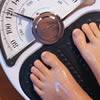
What's Hot
What's Hot
| News flashes are posted here frequently to keep you up-to-date with the latest advances in health and longevity. We have an unparalleled track record of breaking stories about life extension advances.
How DHA helps the brain
A team led by Yves Sauve, who is a member of the University of Alberta's Faculty of Medicine & Dentistry, divided ten mice to receive a diet supplemented with DHA or an unsupplemented diet. Animals that received DHA-enhanced diets were found to have a 29 percent higher level of DHA in the brain's hippocampus region—which is involved in memory--compared to the control group. Higher DHA levels were associated with increased synaptic transmission in the hippocampus following brief stimulation. “This increase in synaptic transmission might provide a physiological correlation for the improved spatial learning and memory observed following DHA supplementation,” the authors conclude. "We wanted to find out how fish intake improves memory," explained Dr Sauve, who works in the University's department of physiology, the department of ophthalmology and the Centre for Neuroscience. "What we discovered is that memory cells in the hippocampus could communicate better with each other and better relay messages when DHA levels in that region of the brain were higher. This could explain why memory improves on a high-DHA diet." He added that supplementing your diet with DHA, either by increasing fish intake or by consuming omega-3 supplements, may help protect against reduced brain DHA levels as we age. —D Dye Reduced vitamin D levels associated with weight gain in women
The study included 4,659 women aged 65 and older enrolled in the Study of Osteoporotic Fractures, a prospective, multicenter study. Serum 25-hydroxy vitamin D levels were assessed upon enrollment and in a subset of participants at follow-up. Seventy-eight percent of the subjects were found to have insufficient levels of the vitamin at 30 nanograms per milliliter or lower. Over the 4.5 year study period, 27 percent of the participants lost over 5 percent of their body weight and 12 percent gained over 5 percent. Endocrinologist Erin LeBlanc, MD and her associates found that among women who gained weight, those whose 25-hydroxy vitamin D levels were insufficient upon enrollment gained an average of 18.5 pounds over 4.5 years compared to 16.4 pounds of weight gain among women whose levels were higher. "This is one of the first studies to show that women with low levels of vitamin D gain more weight, and although it was only two pounds, over time that can add up," announced Dr LeBlanc. "Nearly 80 percent of women in our study had insufficient levels of vitamin D. A primary source of this important vitamin is sunlight, and as modern societies move indoors, continuous vitamin D insufficiency may be contributing to chronic weight gain." "Our study only shows an association between insufficient levels of vitamin D and weight gain, we would need to do more studies before recommending the supplements to keep people from gaining weight," she added. —D Dye Apple compound helps prevent obesity in mice
Associate professor of internal medicine Christopher Adams, MD, PhD and his colleagues fed mice a high fat diet and gave half of the animals ursolic acid for six weeks. Although the mice that received ursolic acid consumed more food than those that did not receive the compound, they gained less weight by the end of the treatment period. They also had greater skeletal muscle mass, grip strength, exercise capacity and brown fat as well as improved glucose tolerance and less liver fat. "From previous work, we knew that ursolic acid increases muscle mass and strength in healthy mice, which is important because it might suggest a potential therapy for muscle wasting," Dr Adams stated. "In this study, we tested ursolic acid in mice on a high-fat diet--a mouse model of obesity and metabolic syndrome. Once again, ursolic acid increased skeletal muscle. Interestingly, it also reduced obesity, pre-diabetes and fatty liver disease." "Since muscle is very good at burning calories, the increased muscle in ursolic acid-treated mice may be sufficient to explain how ursolic acid reduces obesity," he added. "However, we were surprised to find that ursolic acid also increased brown fat, a fantastic calorie burner. This increase in brown fat may also help protect against obesity." "Our study suggests that ursolic acid increases skeletal muscle and brown fat leading to increased calorie burning, which in turn protects against diet-induced obesity, pre-diabetes and fatty liver disease," he concluded. —D Dye Spinach fights carcinogenic effect of cooked meat compound
Once believed to be junk DNA, microRNAs are now known to influence which areas of DNA (the cells" genetic code), are silenced or expressed. "MicroRNAs are very small factors that do very big things in cells," noted lead researcher Mansi Parasramka, PhD, of OSU"s Linus Pauling Institute. In an article published online on May 29, 2012 in Molecular Nutrition and Food Research, Dr Parasramka and colleagues report that microRNAs belonging to the let-7 family are dysregulated in rat colon tumors induced by 2-amino-1-methyl-6-phenylimidazo[4,5-b]pyridine, a heterocyclic amine carcinogen that occurs in cooked meat. However, administering spinach after exposure to the carcinogen reduced the incidence of colon tumors from 58 percent to 32 percent. "Cancer development is a complex, multi-step process, with damaged cells arising through various means," explained Dr Parasramka. "This study showed that alterations of microRNAs affect cancer stem cell markers in colon cancer formation." "Recent research is showing that microRNAs are one of the key epigenetic mechanisms regulating cellular functions in normal and diseased tissues," added Rod Dashwood, who is the director of the Linus Pauling Institute"s Cancer Chemoprotection Program and the study"s lead researcher. "But unlike mutations which are permanent genetic changes in DNA, the good news about epigenetics and microRNA alterations is that we may be able to restore normal cell function, via diet and healthy life style choices, or even drug treatments." —D Dye Stone fruits may combat metabolic syndrome
"In recent years obesity has become a major concern in society due to the health problems associated to it," noted Texas AgriLife Research food scientist Dr Luis Cisneros-Zevallos. "In the U.S., statistics show that around 30 percent of the population is overweight or obese, and these cases are increasing every year in alarming numbers." "The major concern about obesity is the associated disease known as metabolic syndrome," he observed. "Our studies have shown that stone fruits – peaches, plums and nectarines – have bioactive compounds that can potentially fight the syndrome, " Dr Cisneros-Zevallos reported." Our work indicates that phenolic compounds present in these fruits have antiobesity, anti-inflammatory and antidiabetic properties in different cell lines and may also reduce the oxidation of bad cholesterol LDL." "Our work shows that the four major phenolic groups--anthocyanins, clorogenic acids, quercetin derivatives and catechins--work on different cells --fat cells, macrophages and vascular endothelial cells," he continued. "They modulate different expressions of genes and proteins depending on the type of compound. However, at the same time, all of them are working simultaneously in different fronts against the components of the disease, including obesity, inflammation, diabetes and cardiovascular disease." "Each of these stone fruits contain similar phenolic groups but in differing proportions so all of them are a good source of health promoting compounds and may complement each other," he concluded. —D Dye Milk compound protects against obesity in animal study
Nicotinamide riboside boosts a gene known as SIRT1, which impacts metabolism and longevity. SIRT1 is targeted by resveratrol, a beneficial polyphenol found in red grapes and wine. In an attempt to find out if boosting the level of a SIRT1 cofactor known as NAD+ results in similar benefits, the team gave mice a high fat diet and supplemented some with a relatively high dose of nicotinamide riboside, a precursor to NAD+. Supplementation with nicotinamide riboside resulted in an increase in intracellular and mitochondrial NAD+ and greater SIRT1 and SIRT3 activity. Mice that received the compound gained 60 percent less weight than those given an unsupplemented high fat diet, even though they consumed the same amount of food. "This study is very important," announced Anthony Sauve, who collaborated on the research. "It shows that in animals, the use of nicotinamide riboside offers the health benefits of a low-calorie diet and exercise--without doing either one." "The bottom line is that nicotinamide riboside improves the function of mitochondria, the cell's energy factories," he added. "Mitochondrial decline is the hallmark of many diseases associated with aging, such as cancer and neurodegeneration, and nicotinamide riboside supplementation boosts mitochondrial functioning." "It is important to keep in mind that the amount of nicotinamide riboside in milk and other foods appears to be small," Dr Suave cautioned. "Still, we have very encouraging evidence of benefits of nicotinamide riboside and NAD augmentation in general from this animal study—and much more work to do." —D Dye SOD helps prevent blindness in premature infants
Richard Parad, MD and his associates analyzed data from a previous trial of 302 preterm infants who were given recombinant copper/zinc superoxide dismutase (rhSOD) or a placebo to help prevent a chronic lung condition known as bronchopulmonary dysplasia (BPD). While there was no significant difference between the two groups in the incidence of ROP, when a subset of infants born earlier than 26 weeks gestation were analyzed, a 22 percent reduction in ROP risk in association with rhSOD supplementation was observed. For those born prior to 25 weeks gestation, an even greater reduction of 53 percent occurred. "Even though strides have been made in developing interventions to stop ROP from progressing to blindness, there are currently no therapies available for ROP prevention," noted Dr Parad, who is affiliated with Brigham and Women's Hospital's Department of Newborn Medicine. "There is a large need for the preventive approach that rhSOD could potentially provide." —D Dye Aspirin helps prevent post-op kidney failure
The study compared 2,247 patients who consumed aspirin within five days before cardiac surgery to 972 who did not use the drug. While 6.7 percent of those who did not use aspirin developed acute renal failure, the condition occurred in only 3.8 percent of aspirin users. "Thus, the results of this clinical study showed that preoperative therapy with aspirin is associated with preventing about an extra three cases of acute renal failure per 100 patients undergoing coronary artery bypass graft or/and valve surgery," stated Dr Sun. "Looking back and ahead, I believe we can say that aspirin is really a wonder drug, and its wide applications and multiple benefits are truly beyond what we could expect and certainly worthy of further studies both in bench and bedside research," he remarked. —D Dye Higher vitamin D intake associated with lower risk of metabolic syndrome
The current study evaluated data from 4,727 African American and Caucasians who were between the ages of 18 and 30 upon enrollment in the Coronary Artery Risk Development in Young Adults (CARDIA) study, which was created to examine the evolution of coronary artery disease risk factors in young adults. Interviews conducted upon recruitment and during the seventh year of the study provided information on the frequency of intake of food and beverage sources of vitamin D as well as vitamin D supplement intake. Physical examinations and blood testing were conducted at various time points over a twenty year follow-up period. Nearly 19 percent of the subjects developed metabolic syndrome, defined as having three or more of the following: high blood pressure, increased abdominal girth, low HDL cholesterol, high triglycerides and high fasting glucose levels. For participants whose vitamin D intake was among the top one-fifth of subjects, the adjusted risk of developing metabolic syndrome was 18 percent lower than the risk experienced by those whose intake was among the lowest fifth. "In young adults, the dietary plus supplemental vitamin D intake was inversely related to the development of incident metabolic syndrome over 20 years of follow-up," the authors conclude. "Our study findings contribute to the body of literature that showed a beneficial relation of serum or dietary vitamin D with chronic disease and suggest that vitamin D intake may be a potential strategy to prevent the development of adverse cardiovascular disease risk factors." —D Dye American ginseng combats cancer-related fatigue
In a study funded by the National Cancer Institute and the Breast Cancer Research Foundation, Debra Barton, PhD of the Mayo Clinic Cancer Center and her associates administered capsules containing 2,000 milligrams American ginseng or a placebo in divided doses daily for two months to 340 patients who were undergoing or had recently completed treatment for cancer. Sixty percent of the participants were breast cancer patients and brain cancer patients were excluded. Although little improvement was seen at four weeks, those who received ginseng had less general and physical fatigue than the placebo group by the end of the study. No difference in self-reported side effects was observed between the two groups. "After eight weeks, we saw a 20-point improvement in fatigue in cancer patients, measured on a 100-point, standardized fatigue scale," Dr Barton remarked. Compounds in ginseng known as ginsenosides help regulate cortisol (a hormone released during stress) and reduce cytokines involved in inflammation. Future research conducted by Dr Barton will examine the effect of ginseng on fatigue-related biomarkers. "Cancer is a prolonged chronic stress experience and the effects can last ten years beyond diagnosis and treatment," Dr Barton remarked. "If we can help the body be better modulated throughout treatment with the use of ginseng, we may be able to prevent severe long-term fatigue." —D Dye Beta-carotene okay with prostate radiation
Because radiation therapy works via pro-oxidant effects to damage cancerous tumors, a concern has been raised regarding the concomitant use of antioxidant nutrients such as vitamins C and E, selenium and beta-carotene, as they might prove to be protective to cancerous tissue. The current investigation analyzed data from 383 participants in the Physician's Health Study who underwent radiation therapy for prostate cancer. The subjects were randomized to receive 50 milligrams beta-carotene on alternate days or a placebo from 1982 to 2003. Over a median follow-up of 10.5 years the risk of lethal prostate cancer, defined as prostate cancer death or bone metastases, was similar between those who received the placebo and subjects who received beta-carotene. "The use of supplemental antioxidant beta-carotene during radiation therapy was not associated with an increased risk of prostate cancer death or metastases," the authors concluded. "This study suggests a lack of harm from supplemental beta-carotene during radiation therapy for prostate cancer." "This study shows that antioxidant supplementation with beta-carotene during radiation therapy does not appear to detract from the benefit of radiation therapy," commented lead author Danielle Margalit, MD, MPH, who is a radiation oncologist at Boston's Dana-Farber Cancer Institute in Boston. "It also suggests that patients may continue to eat a well-balanced diet that contains foods with natural sources of antioxidants at the recommended daily amount." —D Dye Healthy diet and exercise really do improve chances for a longer life
The current study analyzed data obtained from 713 subjects aged 70 to 79 enrolled in the Women's Health and Aging Studies, which was designed to evaluate the causes of physical disability in older community-dwelling women. Physical activity levels and total serum carotenoids, a marker of vegetable and fruit intake, were assessed upon enrollment. Over the five year follow-up period, 82 women died. While 21 percent of the women were moderately active and 26 percent were categorized as the most active group, over half of the participants reported engaging in no exercise at all. Survivors at the end of the follow-up period had serum carotenoid levels that were 12 percent higher than those who died and double the physical activity levels. Those whose carotenoid levels were among the top one-third of participants experienced approximately half the risk of dying compared to those whose levels were among the lowest third. "A number of studies have measured the positive impact of exercise and healthy eating on life expectancy, but what makes this study unique is that we looked at these two factors together," commented lead author, Dr Emily J. Nicklett, of the University of Michigan's School of Social Work. "Given the success in smoking cessation, it is likely that maintenance of a healthy diet and high levels of physical activity will become the strongest predictors of health and longevity," she remarked. "Programs and policies to promote longevity should include interventions to improve nutrition and physical activity in older adults." —D Dye
|

 June 29, 2012. In an article published online on June 20, 2012 in the journal
June 29, 2012. In an article published online on June 20, 2012 in the journal  June 27, 2012. An article published online ahead of print on June 25, 2012 in the
June 27, 2012. An article published online ahead of print on June 25, 2012 in the  June 25, 2012. Researchers at the University of Iowa have found a positive effect for ursolic acid, found in apple peel, on preventing weight gain in mice. The findings were reported online on June 20, 2012 in the journal
June 25, 2012. Researchers at the University of Iowa have found a positive effect for ursolic acid, found in apple peel, on preventing weight gain in mice. The findings were reported online on June 20, 2012 in the journal  June 22, 2012. A carcinogen formed in cooked meat affects specific microRNAs to promote cancer, according to scientists at Oregon State University (OSU).
June 22, 2012. A carcinogen formed in cooked meat affects specific microRNAs to promote cancer, according to scientists at Oregon State University (OSU). June 20, 2012. The findings of research scheduled for presentation at the 244th American Chemical Society meeting, to be held August 19-23, 2012 in Philadelphia, reveal a protective effect for peaches, plums and nectarines against metabolic syndrome—a cluster of factors that predict obesity-related
June 20, 2012. The findings of research scheduled for presentation at the 244th American Chemical Society meeting, to be held August 19-23, 2012 in Philadelphia, reveal a protective effect for peaches, plums and nectarines against metabolic syndrome—a cluster of factors that predict obesity-related  June 18, 2012. The June, 2012 issue of
June 18, 2012. The June, 2012 issue of  June 15, 2012. In an article published online on June 15, 2012 in the journal
June 15, 2012. In an article published online on June 15, 2012 in the journal  June 13, 2012. The results of a study presented at the European Anaesthesiology Congress in Paris on January 9, 2012 suggest that aspirin consumed during five days prior to
June 13, 2012. The results of a study presented at the European Anaesthesiology Congress in Paris on January 9, 2012 suggest that aspirin consumed during five days prior to  June 11, 2012. In an article published online on May 30, 2012 in the
June 11, 2012. In an article published online on May 30, 2012 in the  June 6, 2012. A study reported this week at the American Society of Clinical Oncology's annual meeting held in Chicago reveals the finding of Mayo Clinic researchers that high doses of American ginseng (Panax quinquefolius) help reduce some of the fatigue experienced by up to 90 percent of men and women with
June 6, 2012. A study reported this week at the American Society of Clinical Oncology's annual meeting held in Chicago reveals the finding of Mayo Clinic researchers that high doses of American ginseng (Panax quinquefolius) help reduce some of the fatigue experienced by up to 90 percent of men and women with  June 4, 2012. An article published in the May, 2012 issue of the
June 4, 2012. An article published in the May, 2012 issue of the  June 1, 2012. A study described online in the
June 1, 2012. A study described online in the 